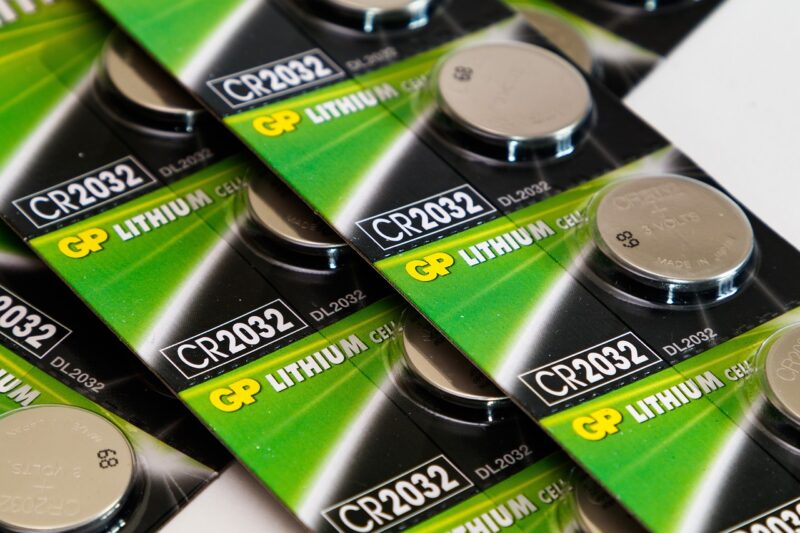
Batteries have become an integral part of our daily lives, powering everything from household devices to electric vehicles. While there are numerous types of batteries available on the market, two of the most commonly used are alkaline and lithium batteries. Although they serve the same basic purpose – storing and providing electrical energy – the chemical compositions and operating principles of these two battery types are fundamentally different. This article delves into the specific differences between alkaline and lithium batteries, highlighting their chemical structures, performance characteristics, and applications.
1. Understanding Battery Chemistry
Before diving into the specifics of alkaline and lithium batteries, it’s essential to understand how batteries work at a chemical level. At the core of any battery is a chemical reaction that produces electricity. Batteries consist of three main components: the anode (negative electrode), the cathode (positive electrode), and the electrolyte. When a battery is connected to an external circuit, a chemical reaction occurs between the anode and cathode, creating a flow of electrons and thus generating electricity.
2. Chemical Composition of Alkaline Batteries
Alkaline batteries are primarily composed of zinc (Zn) for the anode, manganese dioxide (MnO2) for the cathode, and an alkaline electrolyte solution, typically potassium hydroxide (KOH). The chemical reactions that take place in an alkaline battery are as follows:
Anode Reaction (Oxidation):
Zn(s) + 2OH⁻(aq) ⟶ Zn(OH)2(s) + 2e⁻
Cathode Reaction (Reduction):
2MnO2(s) + 2H2O(l) + 2e⁻ ⟶ Mn2O3(s) + 2OH⁻(aq)
Overall Reaction:
Zn(s) + 2MnO2(s) + 2H2O(l) ⟶ Zn(OH)2(s) + Mn2O3(s)
During the discharge cycle, electrons flow from the zinc anode to the manganese dioxide cathode through the external circuit, providing electrical energy. Alkaline batteries generally have a nominal voltage of 1.5 volts per cell and are widely used in low-drain devices such as remote controls, flashlights, and toys.
3. Chemical Composition of Lithium Batteries
Lithium batteries, on the other hand, utilize lithium compounds as the basis for their chemistry. There are several types of lithium batteries, but one of the most common is the lithium-ion (Li-ion) battery, which features a lithium cobalt oxide (LiCoO2) cathode and a carbon-based anode. The chemical reactions that occur within a lithium battery are quite different:
Anode Reaction (Oxidation):
C6 + Li⁺(aq) + e⁻ ⟶ LiC6
Cathode Reaction (Reduction):
LiCoO2 + Li⁺(aq) + e⁻ ⟶ Li2CoO2
Overall Reaction:
LiCoO2 + C6 ⟶ LiC6 + Li2CoO2
In a lithium battery, lithium ions move from the anode to the cathode during discharge, generating a potent flow of electrons. Lithium batteries typically have a higher nominal voltage of around 3.7 volts per cell, making them ideal for high-drain applications such as smartphones, laptops, and electric vehicles.
4. Performance Characteristics
The differences in chemical composition between alkaline and lithium batteries lead to vastly different performance characteristics:
– **Energy Density:** Lithium batteries have a significantly higher energy density compared to alkaline batteries. This means they can store more energy in a smaller and lighter package, making them more efficient for compact devices.
– **Discharge Rate:** Lithium batteries can maintain higher voltage levels over a longer period, while alkaline batteries experience a gradual decline in voltage as they discharge.
– **Self-Discharge Rate:** Alkaline batteries have a higher self-discharge rate, meaning they lose their charge more quickly when not in use, whereas lithium batteries retain their charge for a longer duration, making them more suitable for devices that are used sporadically.
– **Operating Temperature Range:** Lithium batteries function better in extreme temperatures, both high and low, compared to alkaline batteries, which may perform poorly in low temperatures.
5. Applications of Alkaline and Lithium Batteries
Due to their distinct chemical properties, alkaline and lithium batteries are used in different applications:
– **Alkaline Batteries:** These batteries are commonly found in household items such as remote controls, wall clocks, battery-operated toys, and flashlights. Their lower cost makes them ideal for low-drain, everyday devices.
– **Lithium Batteries:** Lithium batteries are preferred for high-tech gadgets, including smartphones, laptops, tablets, and electric vehicles. Their high energy density and longer usability in demanding applications give them a competitive edge in the technology sector.
6. Environmental Considerations
As battery technology evolves, so do concerns about environmental impact. Alkaline batteries are often considered less harmful because they no longer contain mercury (as many older models did) and can be disposed of with regular waste in many jurisdictions. In contrast, lithium batteries pose different challenges, including the need for proper recycling processes due to their potential to release toxic materials if improperly discarded. Many companies are developing more sustainable practices to handle battery waste responsibly.
7. Conclusion
In summary, while alkaline and lithium batteries serve the same essential function of powering devices, their chemical compositions and performance characteristics render them suitable for different applications. Alkaline batteries are best for low-drain devices due to their lower cost and ease of use, while lithium batteries provide high capacity and efficiency for advanced technology and high-drain applications. Understanding these differences can help consumers make informed choices about which battery type best meets their needs.
As technology continues to advance, the chemistry behind batteries will also evolve, leading to more efficient solutions with improved performance and sustainability. With ongoing research into alternative battery chemistries, the future of energy storage holds exciting potential for both consumers and manufacturers alike.







